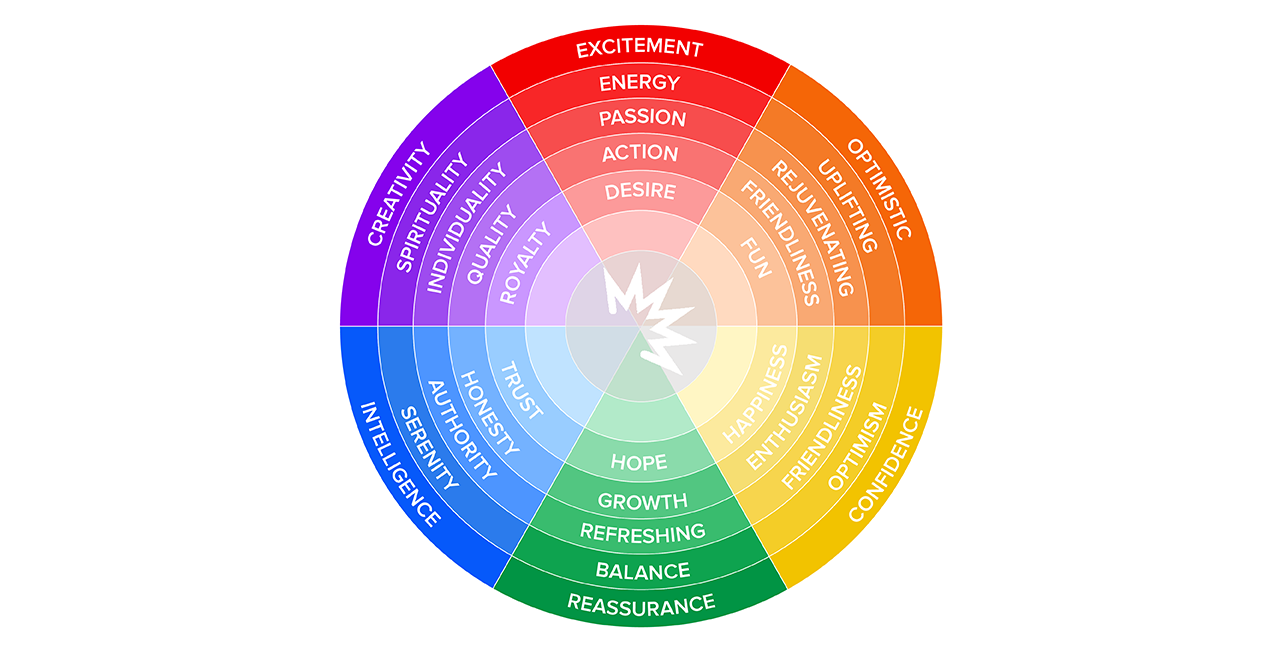
Today, we’re talking about psychology—and how it intersects with digital marketing. Now before you start thinking you’re reading the wrong blog on the wrong website, hear us out: a few years back, Entrepreneur published an interesting article focusing on the psychology of color and the role color, branding, and color persuasion play in your marking.
This article dove into how varied color interpretations are according to the mindset and upbringing of the person viewing them. For example, Snap’s office has a gigantic, orange wall that most of us love. However, if your parents made you dress up as a pumpkin every Halloween for years as a kid, you might not feel the same affinity for that colorful section of drywall.
As crazy as the above example may seem, color and color theory play a massive role in how potential customers perceive your marketing, media, and overall brand. By understanding how color theory impacts marketing, you can learn to create a stronger brand tailored to attract your ideal customers—all the way down to the color of your office wall.
What Is Color Theory?
According to Forbes, color has strong influence over human emotion and behavior that goes deeper than tapping into awkward childhood memories. For example, they tell us warm-toned colors (orange, red, and yellow) may encourage people to think the temperature in a given room is warmer than it really is—and cool-toned colors ( blue, green, and purple) encourage people to feel like the room is colder. For another example, if you live in Alaska, painting the living room of your home a warm yellow will make your visitors feel welcomed and at home despite the colder climate.
Take a peek at the chart below to see what—based on thorough and reputable research—colors and emotions psychologists have found linked to each other. While people’s individual reactions to certain colors may vary based upon personal experiences, there are some proven generalizations that affect customers’ psychological perception of color.
 How Can I Use Color Theory to Grow My Business?
How Can I Use Color Theory to Grow My Business?
Get Acquainted With Your Customers
Any good business person knows that the key to success is the support of their customer base. They also know it’s impossible to provide great products, quality services, and tailored customer support without deeply understanding the needs of your consumer base. For this reason, don’t underestimate the power follow-up marketing can bring to your next campaign.
Launching a new product soon? Send some advance release samples to your most loyal customers. Trying to get more website traffic? Put a “limited-time” coupon up on your product page. Trying to increase your positive reviews? Have a customer service rep personally respond to reviews, thanking your customers for taking time out of their busy schedules to share about the products they love. No matter your approach, use your digital marketing data to gain valuable insights on your customer base so your marketing can be perfectly targeted to promote your success.
Learn What Colors Fit the Vibe of Your Consumer Base
Take another peek at the color wheel chart above. Depending on your business niche, we’re confident that certain colors in the illustration seemed to be nearly jumping off the page. Maybe your brand relates to the natural flow of green, the good-natured easiness of orange, or the wide acceptance of a sky blue. Or, maybe your customers seek the edge and allure that scarlet, dark purple, and black can bring. Once you know your customer base intimately, choosing “their colors” will come surprisingly naturally.
Make These Colors a Central Part of Your Brand
 Forbes magazine released an article discussing a University of Loyola study concluding that “color increases brand recognition by up to 80 percent.” Think about Starbucks, for example: the green and white mermaid immediately comes to mind along with the aroma of fresh-brewed espresso that millions adore. Or, consider Target: that red and white bullseye is impossible to forget—and the adorable pup doesn’t hurt either. These companies picked simple, distinct, and easily pliable color schemes. After you know your customer base, and learn what colors fit your company, you can build an unstoppable brand. (We can’t wait to see what you come up with.)
Forbes magazine released an article discussing a University of Loyola study concluding that “color increases brand recognition by up to 80 percent.” Think about Starbucks, for example: the green and white mermaid immediately comes to mind along with the aroma of fresh-brewed espresso that millions adore. Or, consider Target: that red and white bullseye is impossible to forget—and the adorable pup doesn’t hurt either. These companies picked simple, distinct, and easily pliable color schemes. After you know your customer base, and learn what colors fit your company, you can build an unstoppable brand. (We can’t wait to see what you come up with.)
Get Designing With Snap!
We hope that this intro to color theory will help when you sit down with your design team and start strategizing how you can better incorporate color into your brand. Still feeling a bit out of the look? Let the branding experts at Snap help. We’d love nothing more than to sit down with you and brainstorm ways to make your business more colorful and successful.
